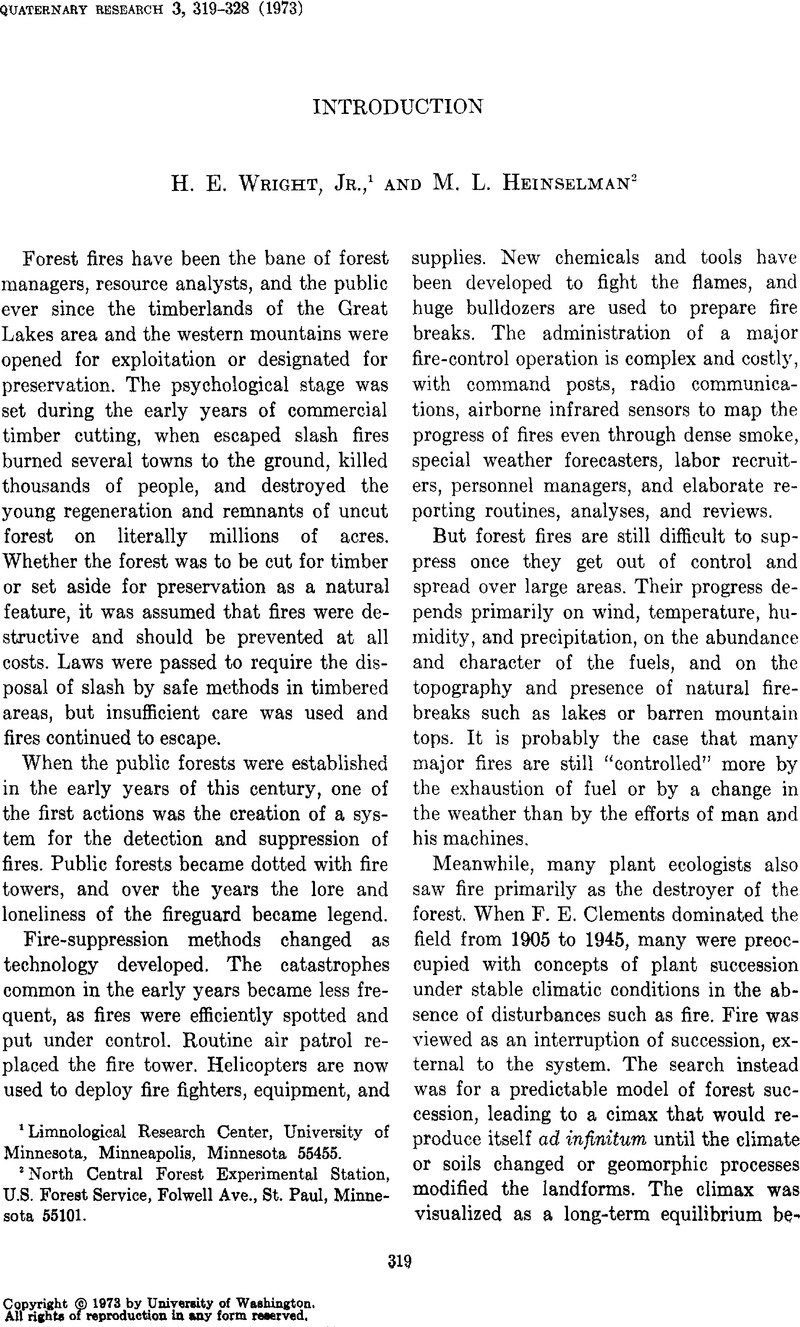Crossref Citations
This article has been cited by the following publications. This list is generated based on data provided by Crossref.
Wright, H. E.
1974.
Landscape Development, Forest Fires, and Wilderness Management.
Science,
Vol. 186,
Issue. 4163,
p.
487.
McColl, John G.
and
Grigal, David F.
1975.
Forest Fire: Effects on Phosphorus Movement to Lakes.
Science,
Vol. 188,
Issue. 4193,
p.
1109.
Whittaker, R. H.
1977.
Evolutionary Biology.
p.
1.
Connell, Joseph H.
1978.
Diversity in Tropical Rain Forests and Coral Reefs.
Science,
Vol. 199,
Issue. 4335,
p.
1302.
Wein, Ross W.
1978.
The Breakdown and Restoration of Ecosystems.
p.
193.
White, Peter S.
1979.
Pattern, process, and natural disturbance in vegetation.
The Botanical Review,
Vol. 45,
Issue. 3,
p.
229.
Vale, Thomas R.
and
Parker, Albert J.
1980.
BIOGEOGRAPHY: RESEARCH OPPORTUNITIES FOR GEOGRAPHERS.
The Professional Geographer,
Vol. 32,
Issue. 2,
p.
149.
LARSEN, JAMES A.
1980.
The Boreal Ecosystem.
p.
281.
Winterhalder, Bruce
1980.
Environmental analysis in human evolution and adaptation research.
Human Ecology,
Vol. 8,
Issue. 2,
p.
135.
Rundel, P. W.
1981.
Physiological Plant Ecology I.
p.
501.
POSAMENTIER, HEIMO G.
CLARK, STEVE S.
HAIN, DAVID L.
and
RECHER, HARRY F.
1981.
Succession following wildfire in coastal heathland (Nadgee Nature Reserve N.S.W.).
Austral Ecology,
Vol. 6,
Issue. 2,
p.
165.
Delcourt, Hazel R
Delcourt, Paul A
and
Webb, Thompson
1982.
Dynamic plant ecology: the spectrum of vegetational change in space and time.
Quaternary Science Reviews,
Vol. 1,
Issue. 3,
p.
153.
Palumbi, Stephen R.
and
Jackson, J.B.C.
1982.
Ecology of cryptic coral reef communities. II. Recovery from small disturbance events by encrusting bryozoa: The influence of “host” species and lesion size.
Journal of Experimental Marine Biology and Ecology,
Vol. 64,
Issue. 2,
p.
103.
Winterhalder, Bruce
1983.
Boreal Forest Adaptations.
p.
9.
Baas, David S.
and
Boucherle, Mary M.
1984.
Changes in Cladocera community structure and fossil pigment stratigraphy as compared to the fire history of Elk Lake, Clearwater Co., MN, U. S. A..
SIL Proceedings, 1922-2010,
Vol. 22,
Issue. 3,
p.
1366.
MILES, J.
1985.
The pedogenic effects of different species and vegetation types and the implications of succession.
Journal of Soil Science,
Vol. 36,
Issue. 4,
p.
571.
Winter, Thomas C.
1985.
An Ecosystem Approach to Aquatic Ecology.
p.
40.
Head, Lesley
1986.
Palaeoecological contributions to Australian prehistory.
Archaeology in Oceania,
Vol. 21,
Issue. 2,
p.
121.
Ritchie, J. C.
1986.
Climate change and vegetation response.
Vegetatio,
Vol. 67,
Issue. 2,
p.
65.
Knight, Dennis H.
1987.
Landscape Heterogeneity and Disturbance.
Vol. 64,
Issue. ,
p.
59.



